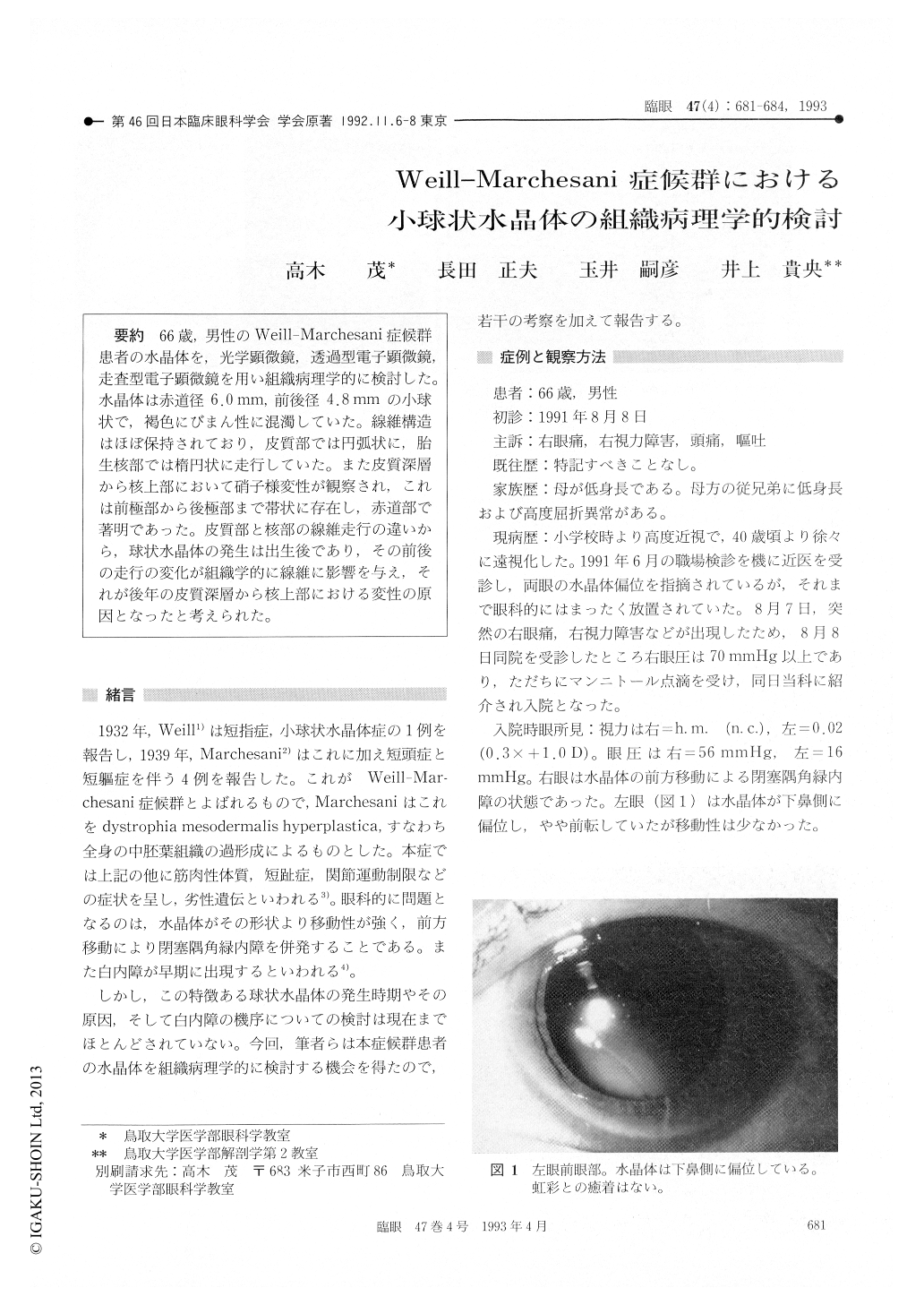Japanese
English
- 有料閲覧
- Abstract 文献概要
- 1ページ目 Look Inside
66歳,男性のWeill-Marchesani症候群患者の水晶体を,光学顕微鏡,透過型電子顕微鏡走査型電子顕微鏡を用い組織病理学的に検討した。水晶体は赤道径6.0 mm,前後径4.8mmの小球状で,褐色にびまん性に混濁していた。線維構造はほぼ保持されており,皮質部では円弧状に,胎生核部では楕円状に走行していた。また皮質深層から核上部において硝子様変性が観察され,これは前極部から後極部まで帯状に存在し,赤道部で著明であった。皮質部と核部の線維走行の違いから,球状水晶体の発生は出生後であり,その前後の走行の変化が組織学的に線維に影響を与え,それが後年の皮質深層から核上部における変性の原因となったと考えられた。
We examined a surgically obtained lens in a 66 -year-old male with Weill-Marchesani syndrome. The lens was diffusely opaque and brown. It was microspherophakic in appearance with 4.8 mm in length and 6.0 mm in equatorial diameter. The lens fibers were well preserved and ran circularly in the cortex and elliptically in the fetal nucleus. They had undergone hyaloid degeneration occupying the area from the deep cortex to the superficial por-tions of the adult nucleus. They also extended from the anterior to the posterior pole and were more marked in the equator. The distribution of lens fibers suggested that microspherophakia developed postnatally. Change in the shape of the lens would later affect the lens fibers and induce hyaloid degeneration.

Copyright © 1993, Igaku-Shoin Ltd. All rights reserved.


